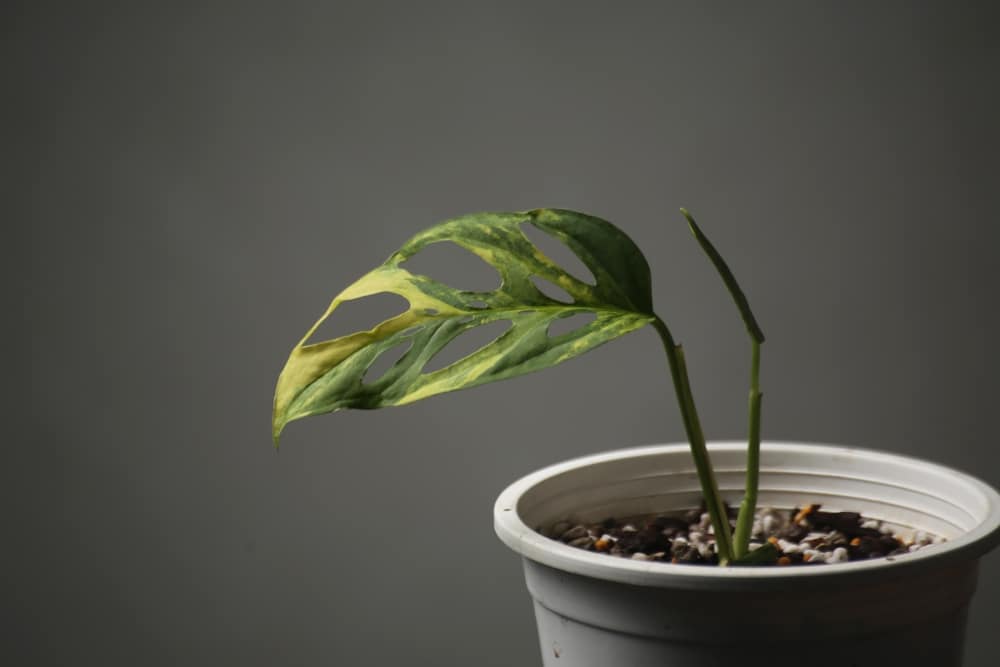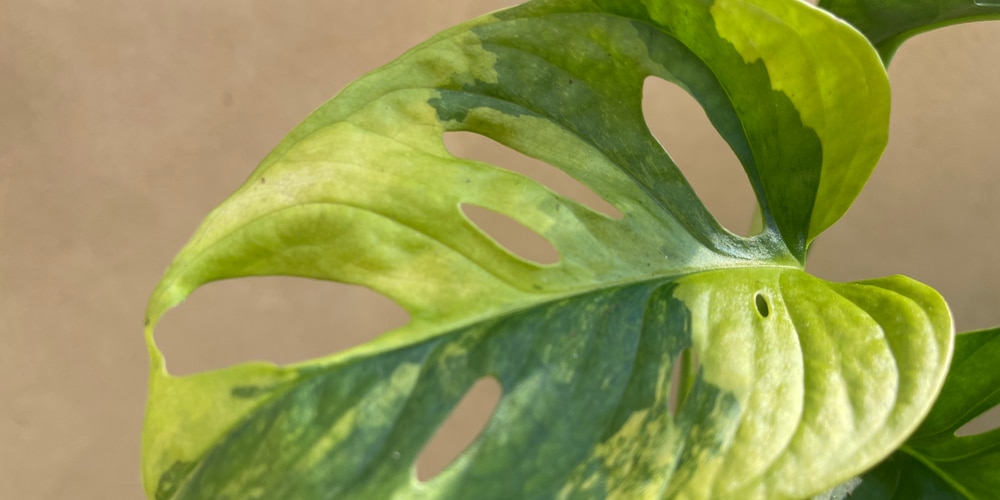Monstera is one of the favorite houseplants in the world. And for many reasons. After all, this plant is gorgeous and not particularly challenging to grow (if you know what to do to recreate its ideal environment). The main attraction of this plant is its lush foliage, which is bright green and dense.
However, houseplants require more care than other plants. And even those that are relatively easy to grow might have some issues. And if you are wondering what you should do with monstera leaves turning yellow, you have landed in the right place.
In this essential guide, we collected all the information you must have on hand to know what might cause discoloration to your plants (and how to solve it).
Why Do Monstera’s Leaves Turn Yellow?
The first step in reverting your monstera to its natural (and attractive) green color is to identify the root cause of the issue. Many factors might cause yellowing, including lack of water, too much moisture, inadequate soil, pests and diseases, and unsuitable growing conditions. But let’s revise some of the reasons your monstera might turn yellow.
Too Much Moisture
One of the trickiest things about growing a houseplant is figuring out its water needs. A lot has to do with selecting a proper potting mix (more on this later). But you also need to understand what your plant needs. Monsteras are native to the rainforests, so they need plenty of humidity to thrive.
However, that doesn’t mean you’ll need to leave your plant in soggy conditions. Indeed, too much water will cause root rotting. And one of the first symptoms of too much moisture is the plant’s leaves turning yellow. Despite sounding counterintuitive, feeding your plant too much water will make it unable to absorb nutrients in the soil.
Feel the soil with your fingers before adding extra moisture to prevent this issue. If it isn’t dry, wait before watering your plant. And if it releases an unpleasant odor, it might start to rot. In this case, you can still save your plant by moving it to a different container (with a new potting mix).
Lack of Moisture
Just like too much water can cause issues, a lack of it will cause monstera’s leaves to turn yellow. Luckily, when you identify inadequate moisture as the cause of the problem, you’ll be able to revert it fast. If the soil feels dry at the touch, it is a sign your monstera needs more water. Other symptoms of underwatering include drooping, yellowing, and curling.
Eventually, the leaves will turn crispy. If that’s the case, water your monstera thoroughly and increase the frequency at which you add moisture to your plant. Of course, avoid overwatering. If the problem persists and your plant’s leaves do not turn green, you might have a different issue.
Inadequate Growing Conditions
Monsteras love humid and warm environments. So, avoid exposing them to temperatures below 50°F, which may cause yellowing. Also, remember that Monsteras are tropical forest plants that prefer indirect sunlight. If you are growing them next to a window (or outdoors), don’t leaven them under the sun: it will burn their leaves!
Additionally, monstera won’t stand temperature stress, which can too cause yellowing of the leaves. Avoid placing your houseplant in a windy location, next to the radiator, or under the air conditioning.
Of course, pests and diseases also affect your plant’s health. Keep an eye out for aphids and mites, which are uncommon but not rare. Additionally, powdery mildew is a fungal infection that usually affects overwatered houseplants and might cause severe issues to your plant.
Not Using the Proper Substrate
Selecting an adequate substrate is crucial to the health of your plant. Monstera plants need a moist environment, so you’ll need to use well-draining soil to prevent issues with root rotting. You may have to add a pebble tray or a layer of mulch to increase water retention and maximize humidity around your plant.
Also, don’t forget that your plant will need nutrients to grow. Imbalances in fertilizers can cause yellowing of the leaves. While you should avoid over-fertilization, which can burn the ground around your plant and result in chemical dehydration, you must ensure your plant has access to all the nutrients it needs to grow.
Follow the instructions on the product’s label and consider using organic fertilizers to prevent severe issues. Consider making a soil test to check for any nutrient deficiencies you may have to address.

